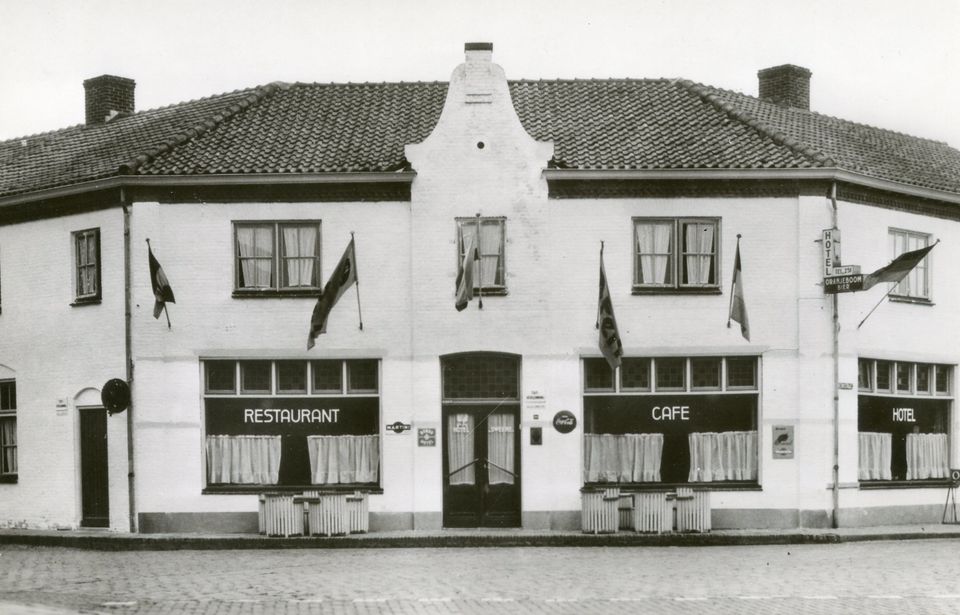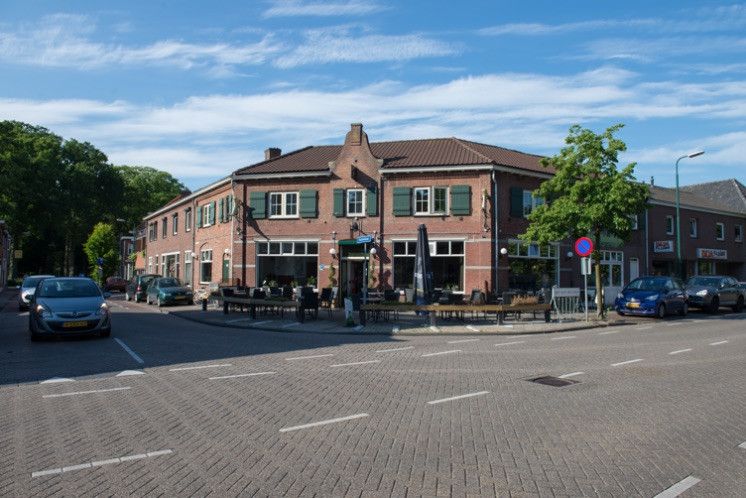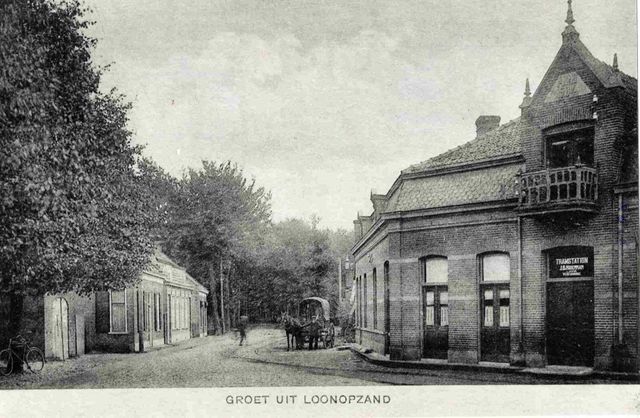Former Tram Station
This location is part of the "Walking in Historic Loon op Zand' route.
The original building on this site was built in the second half of the nineteenth century. In April 1904, the streetcar station was completely destroyed by fire.
In 1881, the inn became a streetcar station after the construction of the Tilburg-Besoijen streetcar line. The owner at the time, Adriaan Vermeer, had the corner of the house demolished for this purpose at the expense of the Noord-Brabantsche Stoomtramweg-Maatschappij in Tilburg, so that the streetcar could take the bend. In 1934 passenger transport by streetcar through Loon op Zand came to an end, and in 1937 so did freight transport.
Across from the former streetcar station is ...
This location is part of the "Walking in Historic Loon op Zand' route.
The original building on this site was built in the second half of the nineteenth century. In April 1904, the streetcar station was completely destroyed by fire.
In 1881, the inn became a streetcar station after the construction of the Tilburg-Besoijen streetcar line. The owner at the time, Adriaan Vermeer, had the corner of the house demolished for this purpose at the expense of the Noord-Brabantsche Stoomtramweg-Maatschappij in Tilburg, so that the streetcar could take the bend. In 1934 passenger transport by streetcar through Loon op Zand came to an end, and in 1937 so did freight transport.
Opposite the former streetcar station is a former short-gabled farmhouse built in 1882 (Kasteellaan 1), whose construction is in original condition. In the building, which is on the municipal monument list, a café was operated at the end of the nineteenth and beginning of the twentieth century, later it was a residence cum shoe factory. The architect was H.J. van den Heuvel from Kaatsheuvel.





